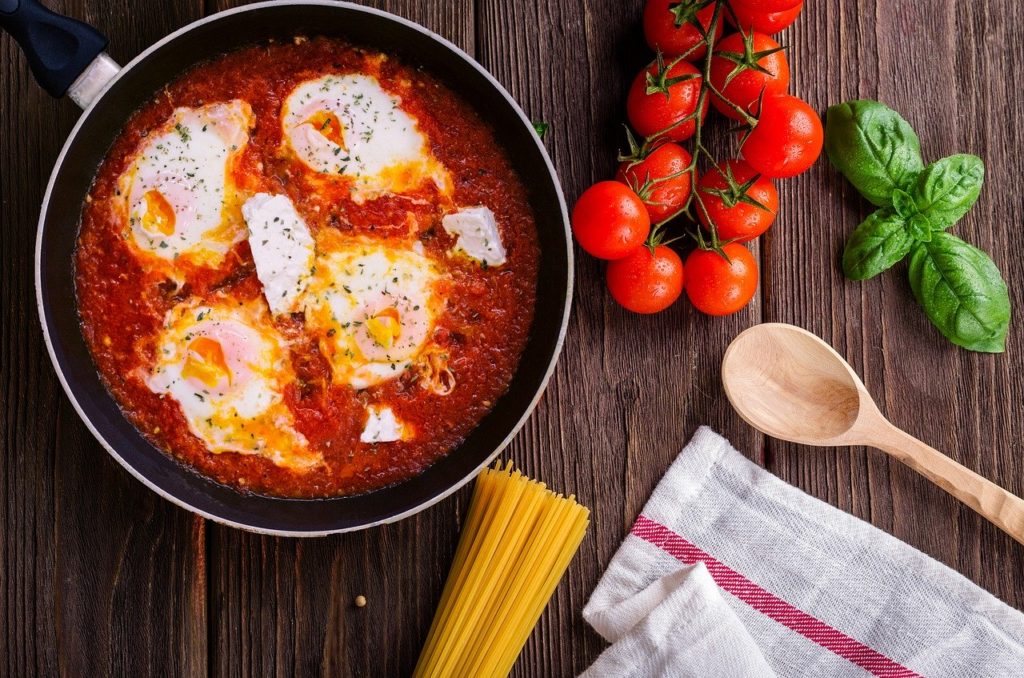People who are new to this whole health-related subject would often ask, “how to do the Mediterranean diet?”
Garnering attention from all the corners of the globe, the Mediterranean diet has become a religion for food and health enthusiasts, but it’s not just merely fad or hobby, no, people notice it for a good reason. The reduction of risks in certain diseases such as cardiovascular disease, type 2 diabetes, depression, cancers, metabolic syndrome, improving muscle mass in older adults, as well as help maintain optimal mental and physical function – are just among the health benefits that have been discovered thus far – and there are still more being discovered as time goes by. The US News & World Report declared the Mediterranean diet as the “best diet overall” for its second consecutive year just this January 2020.
What is the Mediterranean Diet?
You could say that the traditional Mediterranean diet was developed hand-in-hand with the rise and fall of empires surrounding the Mediterranean Sea, because just about every meal prepared for this kind of diet was influenced by these cultures one way or another. This amazingly healthy diet is based on these selections of foods:
- The first priority in preparing Mediterranean-style food is to use vegetables, fruits, whole grains, nuts and legumes – all of which are locally grown, fresh and are often unprocessed or raw
- The superbly healthy source of fat – olive oil – is used to stir-fry the ingredients
- Dairy products like cheese and yogurt are to be consumed in terms of low – moderate amounts daily (too much can cause an imbalance and negative side effects)
- Seafood and poultry products should be eaten only a few times a week and in moderate to low amounts
- As for red meat, you should eat it about once every 2 weeks and only in small amounts (red meat is associated with many diseases, which is why it is partially prohibited in the Mediterranean diet)
- Food that contains sugars or honey are advised to be consumed only a few times a week, although you can eat fresh fruits for dessert daily
- Wine (especially red wine) is encouraged for you to consume daily together with every meal you eat, but only in low to moderate amounts
The Many Ways on How to Do the Mediterranean Diet
Although it can be challenging to switch from the meals you’ve grown to know and love, there is a way to shift into the Mediterranean diet, albeit slowly but surely. Take a look at these tips we’ve created for you to follow and make that change one step at a time. Find the tip that you’re comfortable with and try it out. You’ll find out how to do the Mediterranean diet from the list below. Follow at least one tip per week until you gradually shift into the Mediterranean diet completely.
- Switch to Extra Virgin Olive Oil – Whatever source of fat that you’re using before, switch it up with olive oil on all stir-fried foods, then try preparing salad dressings with the base ingredient as olive oil also. You can also replace butter with olive oil when you cook your crusty bread.
- Eat Nuts and Olives – Replace processed foods that you eat as snacks with raw nuts, as this is a healthier alternative.
- Include some Whole Grains or Whole-Grain Bread to your Meals – When you buy bread this time, pick ones that are baked country-style loaves that’s chewy and compact with no added sugar or butter. Try experimenting with bulgur, barley, farro, couscous, and whole-grain pasta in your cooking.
- Always Eat Salads Before or After Meals – Mix various greens and leafy vegetables that are available in each season to make your salads.
- More Vegetables – Try a new vegetable every week. Add some vegetables in meals you eat during lunch and dinner as this will improve your overall health and well-being.
- Consume at Least 3 Servings of Legumes Per Week is Recommended – Choose from any of these to include in your meals: lentils, chickpeas, beans, and peas.
- Limit Meat Consumption – It may be best to make lean poultry as your primary source of meat protein (consume moderately at about 3 – 4 ounces per serving). Save red meat for occasional consumption or use meat as a condiment, mixed with vegetables, (i.e. stir-fries, soups and stews). Consume more seafood, especially fresh fish prepared as a stir-fry recipe or fish stew at about 2 – 3 servings every week (canned fish is also okay to eat).
- Put Wine on the Pedestal – Trade in your beer and other alcoholic beverages for wine (for men: 2 x 5-ounce glasses per day, women: 1 x 5-ounce glass per day).
- No More Beverages with High Sugar Content – You ought to make pure crystal clear drinking water your preference over soda and juices, which can lead you to develop type 2 diabetes.
- Desserts that are High in Sugar and Fat must also Go – Eat fresh fruits instead. Consume about 3 servings of fruits each day and better prepare your sweets only for special occasions.
- Never Trade Quality for Anything of Lesser Worth – Go straight to your local farmer’s market, because they have the best quality, locally grown and fresh food to offer you than in any other place.
Last but not least, food will taste better if you enjoyed eating it as a family, or even dinning with a group of friends is as good as having a family dinner. Food as a communal, shared experience is an essential part of the Mediterranean diet. I hope this answers your question about how to do the Mediterranean diet.
How to Do the Mediterranean Diet 24/7
There are plenty of ways you can add the mouth-watering meals from the Mediterranean diet into your daily eating regimen. The meals suggested in the list below are some of the few ways on how to do the Mediterranean diet.
Breakfast
- Prepare delicious bread made from whole-grain topped with low-fat cheese (just a small amount of it) and fresh slices of red tomatoes, drizzled with some extra virgin olive oil.
- Or you can also cook a crusty whole-grain bread in olive oil and complement it with vegetable omelet made from a mix of mushrooms, spinach, and onions.
- The third option would be plain Greek yogurt with fresh berries and nuts decorating its top.
Lunch
- Start your lunch with Greek salad made from a mixture of feta cheese, fresh parsley, tomatoes, kalamata olives and other leafy greens. Make a dressing of freshly squeezed lemon and extra virgin olive oil.
- For your second option you can do the chickpea and farro salad with fresh oregano, spring onions, and red bell peppers, dressed with lemon juice and extra virgin olive oil.
- The third option really rocks, because it’s going to be vegetarian pizza topped with carrots, green peppers, onions, roasted broccoli, and part-skim mozzarella cheese!
Dinner
- Your dinners won’t be boring, I promise! Because there’s a lot of new recipes to try out just like the grilled vegetable kabobs with shrimp, quinoa salad (toasted), and mixed green salad with pine nuts.
- Next recipe option would be the chicken stir-fried in olive oil with broccoli, yellow peppers, asparagus, and cauliflower, served with steamed brown rice.
- Finally, your third option would be the steamed mussels with a side dish of spinach-orzo salad and minestrone soup.








2 Responses
Hello there! This post couldn’t be written much better! Looking
through this post reminds me of my previous roommate!
He always kept talking about this. I am going to forward this article to him.
Pretty sure he will have a very good read. Thanks
for sharing!
Magnificent submit, very informative. I’m wondering why
the opposite specialists of this sector don’t realize this.
You must continue your writing. I’m sure, you have a great readers’
base already!